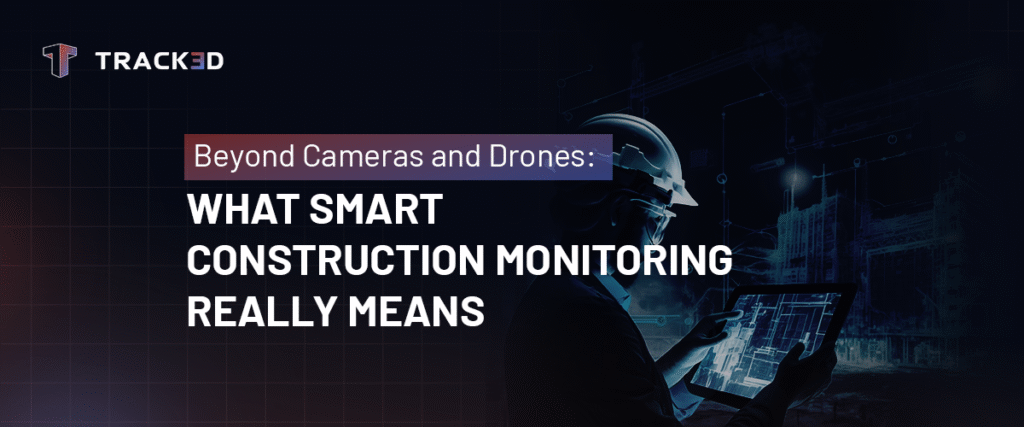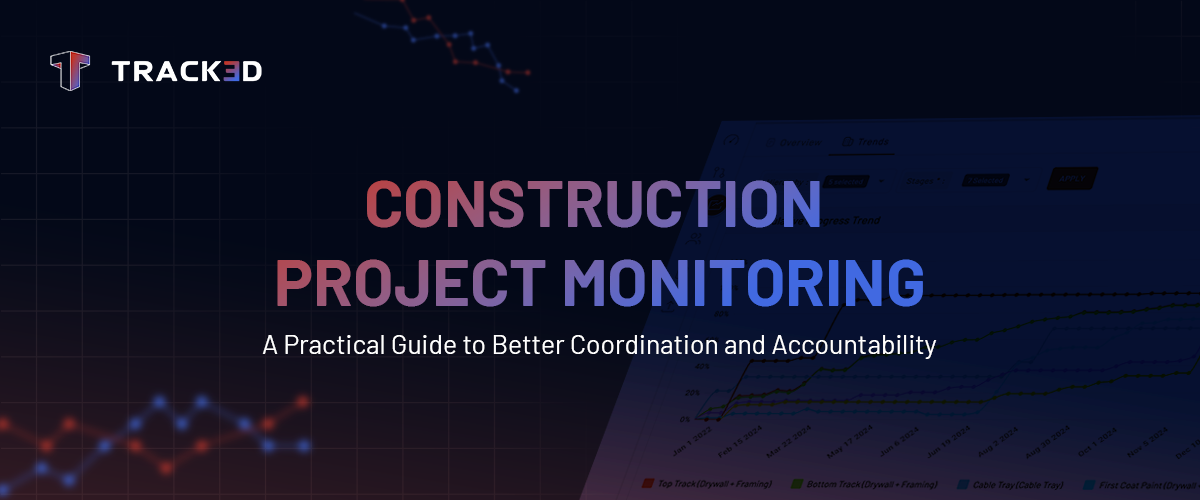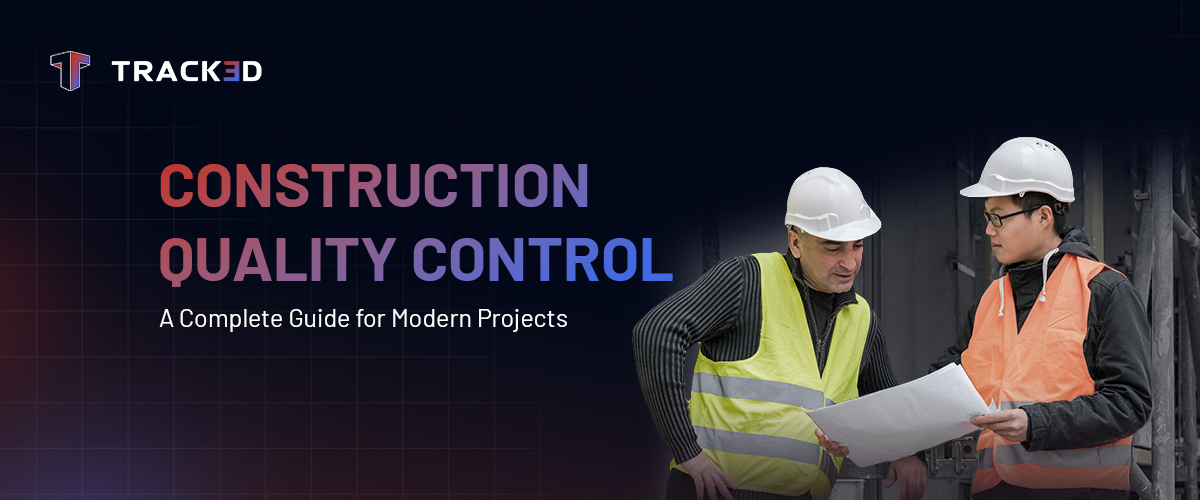Blogs
Beyond Cameras and Drones: What Smart Construction Monitoring Really Means

It’s easy to think that smart construction monitoring is all about drones buzzing overhead and 360° cameras mounted on hard hats. And yes, those tools matter. But when you look past the hardware, there’s a more important question: is your monitoring process actually helping you build smarter?
The construction industry is under pressure—compressed schedules, razor-thin margins, and rising expectations for transparency. In that landscape, simply collecting data isn’t enough. To be truly smart, monitoring needs to be continuous, contextual, and usable. In this article, we’ll explore what that really looks like, why it matters, and how to spot the difference between flash and function.
The Buzz Around Smart Construction Monitoring
The term “smart construction monitoring” is everywhere, from jobsite marketing decks to tech vendor webinars. It often conjures images of high-tech tools capturing every inch of the site in crisp detail. But beneath that buzz lies a fundamental shift: the move from reactive documentation to proactive site intelligence.
Smart construction monitoring is about turning site activity into structured knowledge. It’s not just about having more footage or more sensors—it’s about making better decisions faster. That shift is redefining how teams track progress, flag issues, and coordinate in the field.
What It’s Not (Just Cameras and Drones)
Here’s the hard truth: having advanced tools doesn’t mean you’re doing smart monitoring. Many teams invest in drones or cameras, only to end up with hours of footage that never gets reviewed, or static images saved in disconnected folders.
What’s missing? Context. Without a system to tie visuals to actual tasks, timelines, or locations, the value quickly erodes. The footage might be there, but if no one can use it to answer, “What happened here, when, and why?” then it’s just digital clutter.
What Truly Makes Monitoring Smart
To unlock real value, monitoring must be built on four core principles:
- Continuous & Passive Capture: The best insights come when capture happens in the background, without extra effort from field teams. Think walk-and-capture 360° imagery.
- Location-Aware Data: Smart systems know where things happen, not just what. Images tied to floor plans or room numbers let teams zoom into specific areas and understand issues spatially.
- Structured + Visual Data: Notes are good. Notes with photos are better. Notes with geo-tagged, time-stamped, and trade-labeled visuals? That’s real context.
- Searchable and Shareable: Smart monitoring makes it easy to find what you need—whether it’s yesterday’s progress, a deviation from the plan, or evidence for a subcontractor meeting.
Smarter Means Smoother (Real Use Cases)
Let’s look at what happens when monitoring gets smarter:
- Progress tracking becomes less about guesswork and more about visual validation. Teams can confirm completion against scope, fast.
- Trade coordination improves when everyone has access to the same visual truth. Fewer “he said, she said” scenarios.
- Schedule alignment tightens as field reality stays in sync with planning tools.
- Quality issues and RFIs get resolved faster with annotated visuals instead of back-and-forth emails.
This isn’t about futuristic tech—it’s about creating a workflow that helps teams communicate clearly and act quickly.
Is Your Construction Monitoring Evolving with Your Projects?
If your current process relies heavily on end-of-day notes, scattered photos, or manually written reports, it might be time to level up. Signs your monitoring isn’t keeping up:
- Information is delayed, duplicated, or difficult to locate
- Issues are discovered too late to act on
- Site visits are the only way to “see for yourself”
Smart construction monitoring bridges the gap between field and office, turning real-world activity into reliable, accessible documentation.
Think Beyond Tools—Think Smarter Monitoring
So, what does smart construction monitoring really mean? It means moving beyond disconnected footage and toward structured, visual intelligence. It means empowering field teams to document effortlessly and enabling office teams to act confidently.
The tools are just the starting point. The real value comes from what you do with the data.
Curious how smart construction monitoring can work for your team? Explore how progress tracking with structured data are helping contractors stay ahead, without adding extra work in the field.




